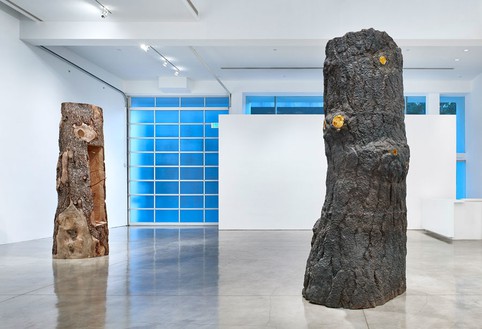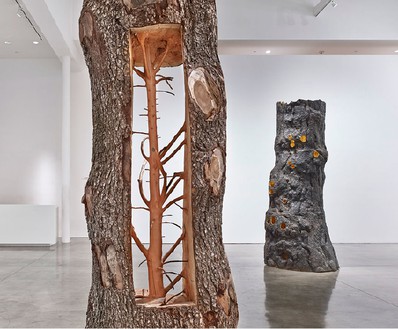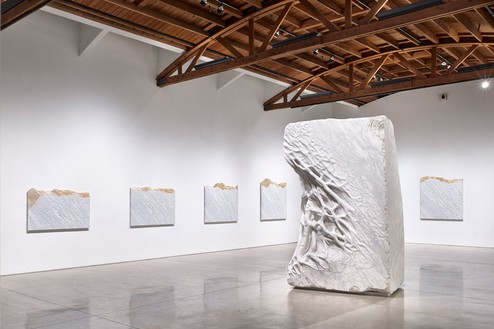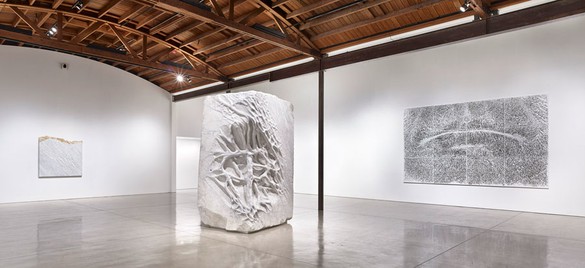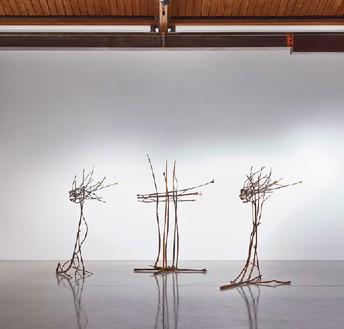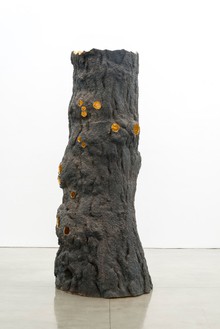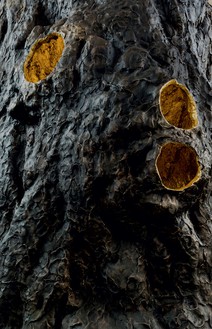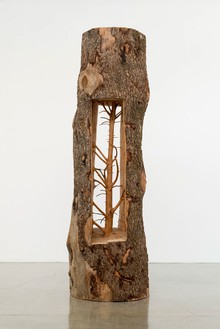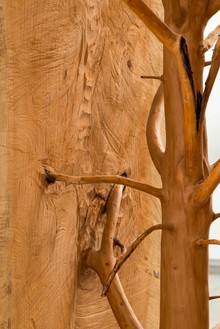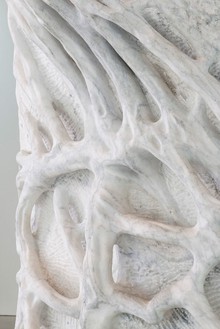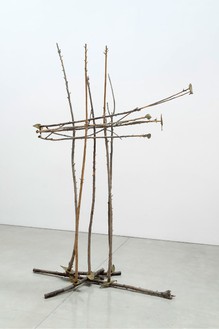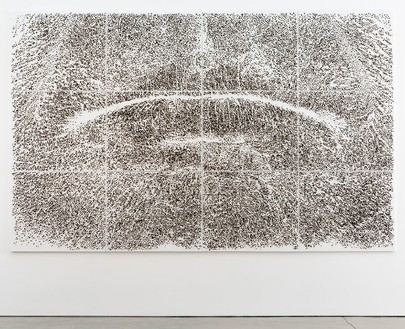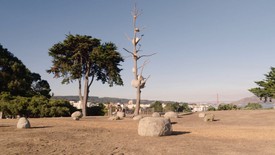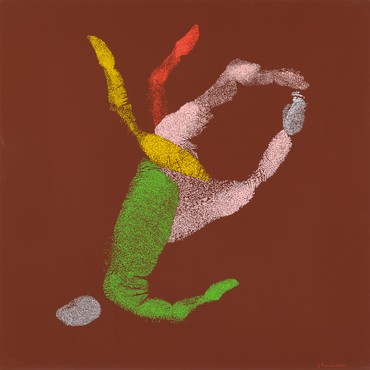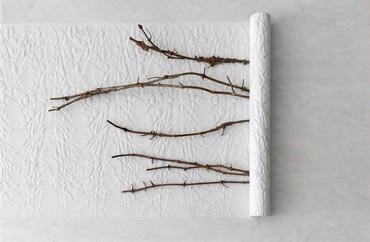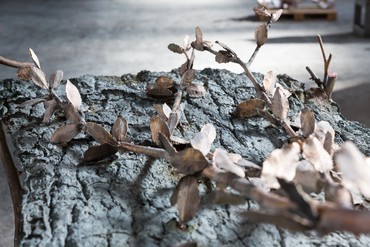About
What fascinates me about trees is their structure: the tree is a being that memorializes the feats of its existence in its very form. Similarly, our bodies could be considered the sum of the performance of our existence. The tree can be considered a metaphor for the work of a sculptor who fixes his actions in the material.
—Giuseppe Penone
Gagosian Beverly Hills is pleased to present Giuseppe Penone’s first major exhibition on the West Coast.
In sculptures, drawings, photographs, and installations, Penone heightens the subtle levels of interplay between man, art, and nature. His work represents a poetic expansion of Arte Povera’s radical break with conventional media in favor of organic and accessible matter, and emphasizes the involuntary processes of respiration, growth, and aging that are shared by man and tree. During the late 1960s in the forests near Garessio, Italy, Penone stunted the growth of trees with nails, metal wire, and an iron cast of his hand that gripped a living trunk, thus insinuating himself into the cycles of the landscape. He continued to engage his own body in the early 1970s by drawing the textures of his skin and casting his face in plaster; in To Reverse One’s Eyes (1970), he was photographed wearing mirrored contact lenses, positing vision as the precise point of separation between self and environment. In recent years, Penone has taken the natural attributes of traditional sculptural media, including wood, bronze, and marble, as points of departure for the creation of monumental, tactile forms.
The exhibition takes its title from a passage in John Keats’s poem Ode to Psyche (1819), an anecdotal narrative of love, nature, and the creative imagination. Each work is a revelation of the sculptural qualities innate to natural materials. Penone chisels cedar trunks and masses of marble to expose the deep patterns resulting from growth and time, characteristics that he further emphasizes through carving, patination, and replication. In Anatomia / Anatomy (2011), a 23-ton marble block, he reconceives the veined surface as a matrix of tendrils, advancing the original marks into multiple dimensions.
Share
Artist
Download
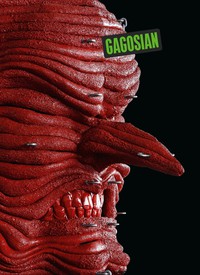
Now available
Gagosian Quarterly Fall 2022
The Fall 2022 issue of Gagosian Quarterly is now available, featuring Jordan Wolfson’s House with Face (2017) on its cover.
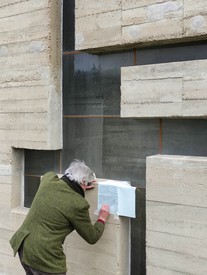
Giuseppe Penone À La Tourette
Le Couvent Sainte-Marie de La Tourette, in Éveux, France, is both an active Dominican priory and the last building designed by Le Corbusier. As a result, the priory, completed in 1961, is a center both religious and architectural, a site of spiritual significance and a magnetic draw for artists, writers, architects, and others. This fall, at the invitation of Frère Marc Chauveau, Giuseppe Penone will be exhibiting a selection of existing sculptures at La Tourette alongside new work directly inspired by the context and materials of the building. Here, Penone and Frère Chauveau discuss the power and peculiarities of the space, as well as the artwork that will be exhibited there.
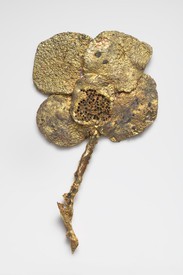
Augurs of Spring
As spring approaches in the Northern Hemisphere, Sydney Stutterheim reflects on the iconography and symbolism of the season in art both past and present.

Giuseppe Penone: By the Bay
Elizabeth Mangini writes on Giuseppe Penone’s installation of two sculptures at San Francisco’s Fort Mason.
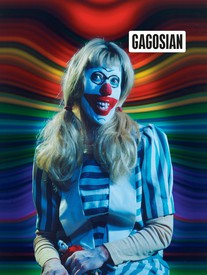
Now available
Gagosian Quarterly Spring 2020
The Spring 2020 issue of Gagosian Quarterly is now available, featuring Cindy Sherman’s Untitled #412 (2003) on its cover.
Giuseppe Penone at Fort Mason
An outdoor installation by Giuseppe Penone in San Francisco’s historic Fort Mason features two life-size bronze sculptures cast from fallen trees. The project continues the artist’s long investigation of the perpetual give-and-take between humans and nature. In this video, Penone discusses what drew him to this landscape and the concepts behind the installation.
